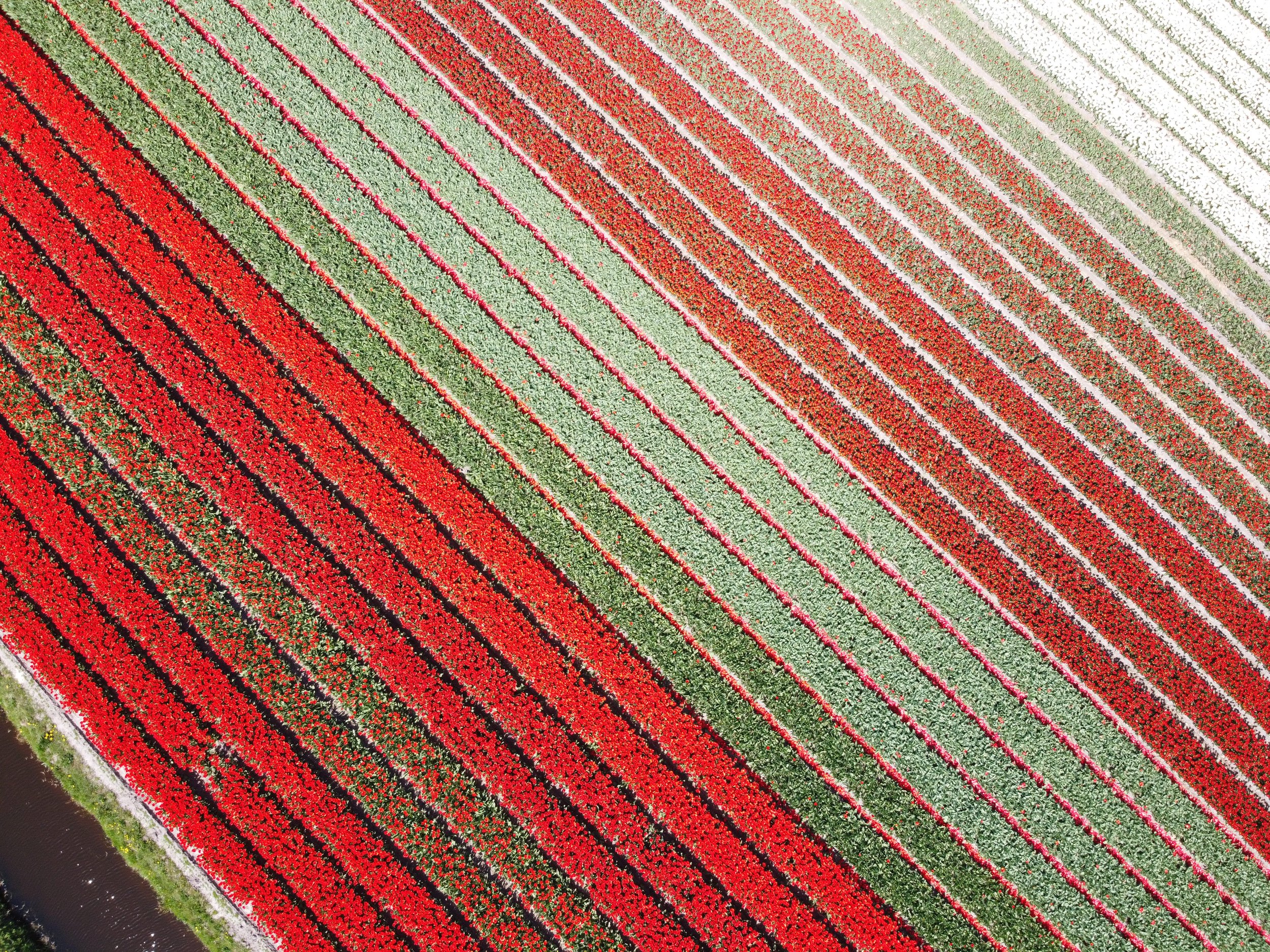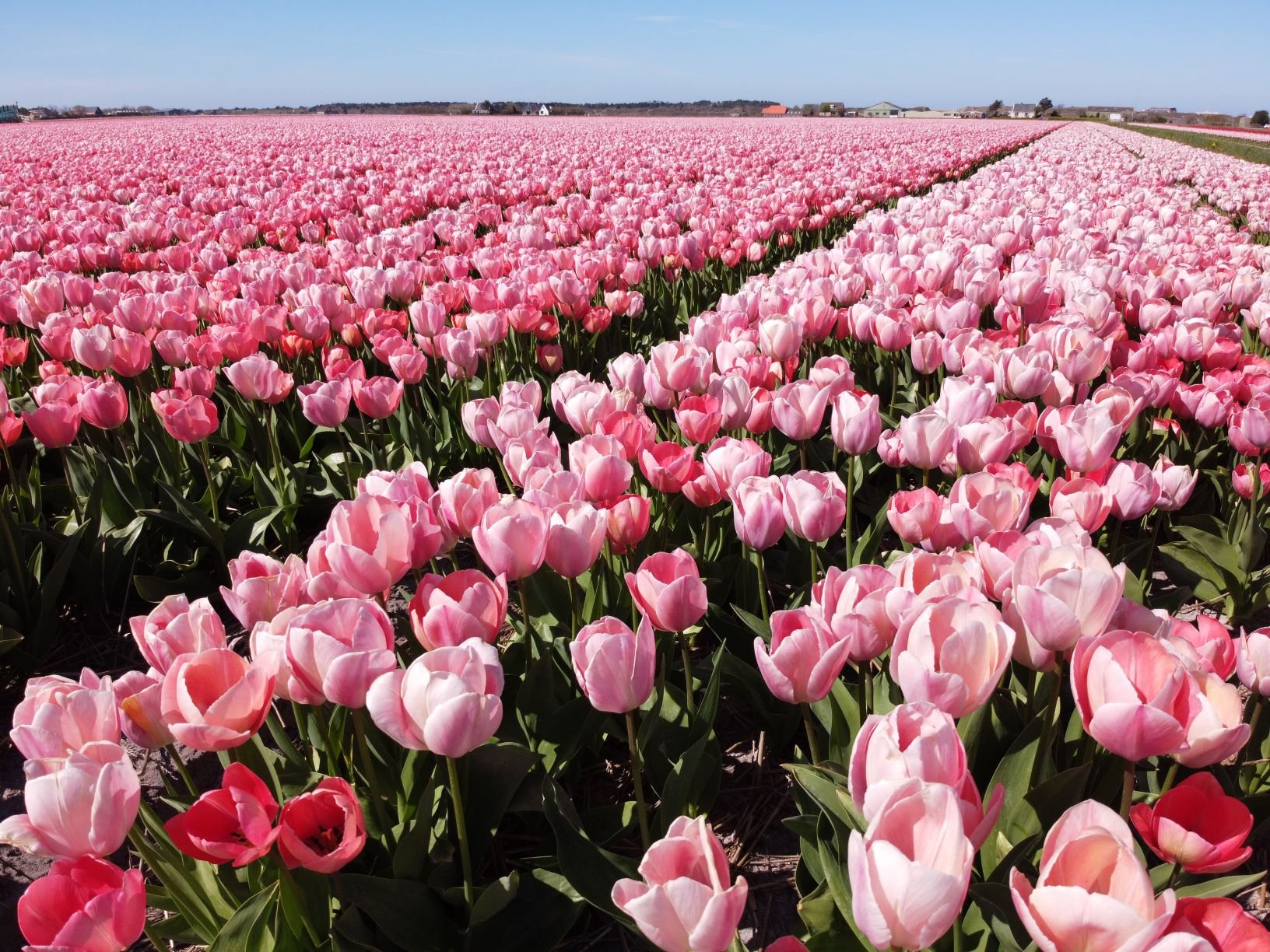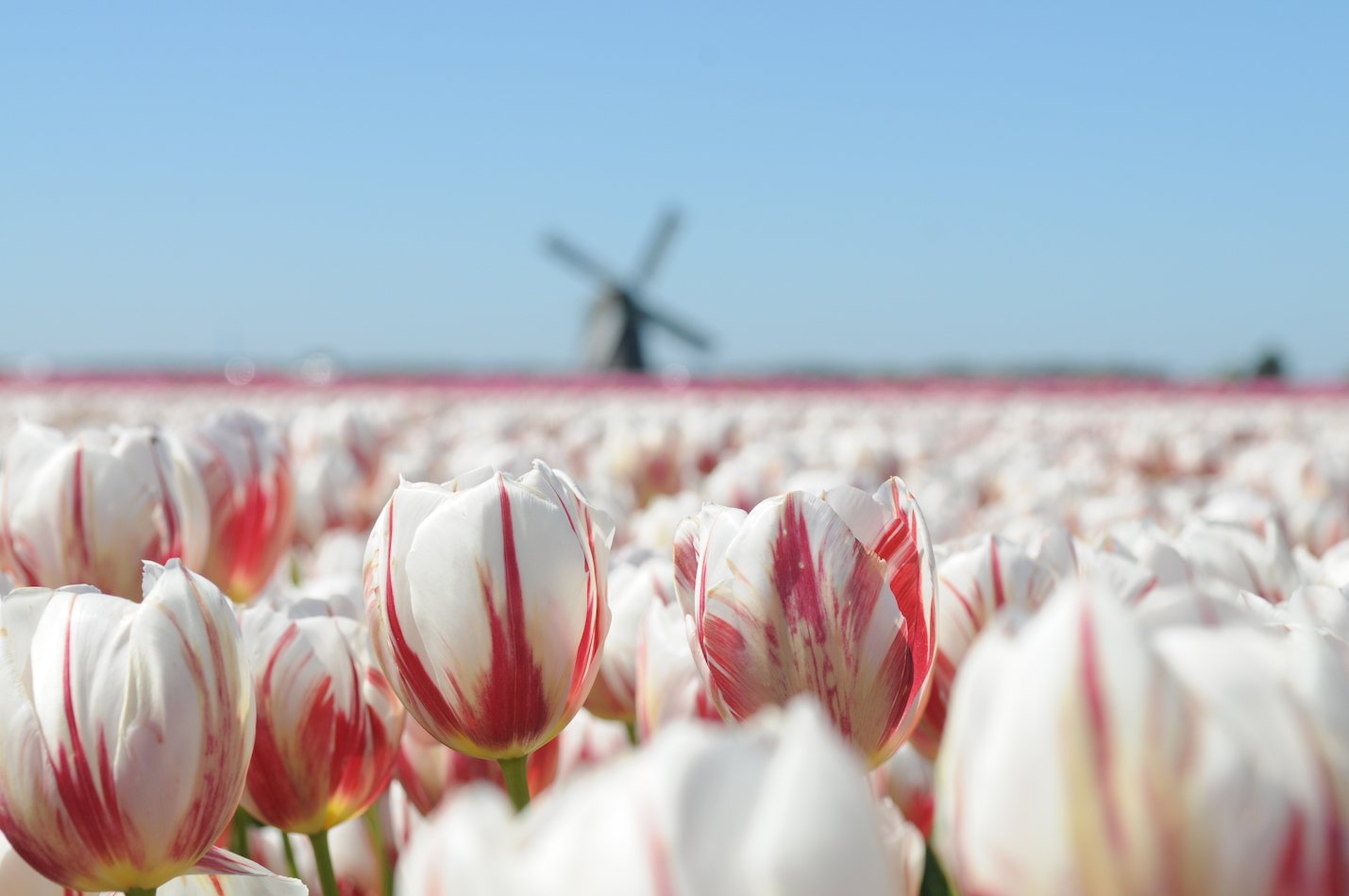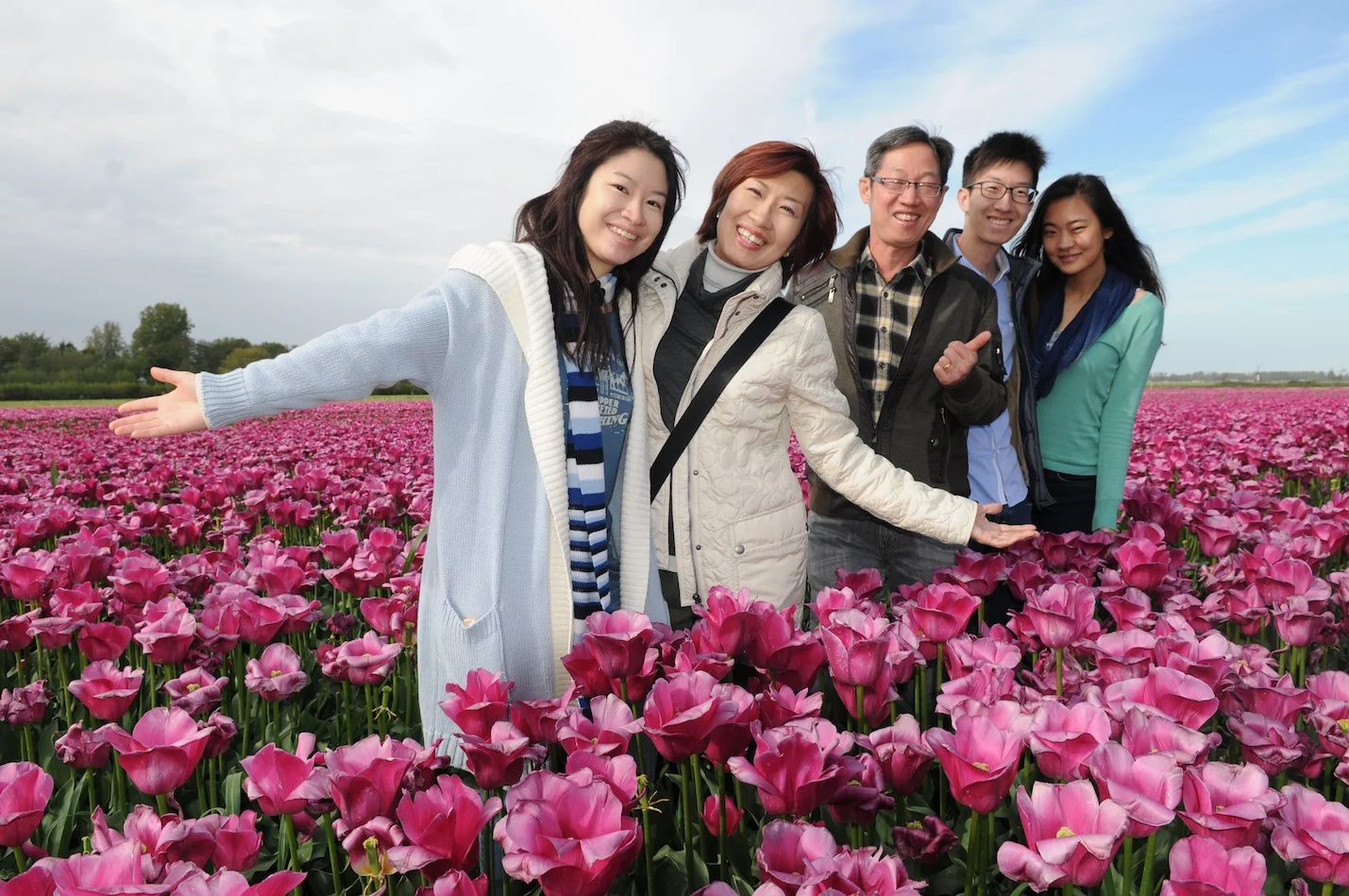A tulip is a tulip…
A tulip is a bulbous plant in the lily family, growing here in the Netherlands in the early spring (usually between mid-April and early May). Tulips grow best in cool, wet climates where they can be watered often (also why Holland is perfect for growing them!). Tulips come in a variety of colors and sizes, but perhaps the most well-known variety is the red tulip, which has been used as a symbol of love and affection for centuries. There’s no doubt, the bright tulip colors are a welcome sight in the springtime here in the Netherlands.





Hundreds of years ago, the Dutch believed that tulips were good for the complexion or eyesight, and believed that they could cure headaches. Some also believed that people who ate tulips made their stomachs strong and healthy! If you go on a tulip tour with us, you can try it for yourself at the bio tulip farm, for instance.
Dutch tulip history (and tulip mania!)
The tulip trade began in 1620 when a Dutch florist introduced a variety of tulips to the public. Over time, more and more varieties of tulips were introduced and the Dutch population became more interested in the new tulips causing tulip prices to rise. In 1636, Queen Christina of Sweden became the first person to pay the tulip price of one thousand florins, which was equivalent to £50,000 in 2017. People from wealthy aristocratic Dutch families, as well as poor market gardeners and tradesmen, bought and sold the new varieties that were introduced. It was a time of great change in the Netherlands…
In the late 16th and early 17th centuries, the tulip was the most valuable commodity in the world. The tulip bulb was a very desirable flower that was carefully selected and grown from a small number of specimens and then marketed as a luxury product. The bulb was highly valued because of its beautiful appearance and distinctive tulip shape.
‘Tulip mania’ lasted many years and the tulip trade is considered to be one of the most famous examples of speculative investment (i.e. where commodity prices were used to speculate on an asset without collateral). It illustrates some of the major aspects of this type of behavior in the context of a financial crisis.
See for yourself
With Toms Travel Tours, you can see the beautiful blooming fields of tulips and some windmills, of course, not far from Amsterdam, or even visit the flower auction, where you can get an insight into today’s lively tulip and flower market. Want more information on our tulip tours, or wish to book directly, get in touch!

